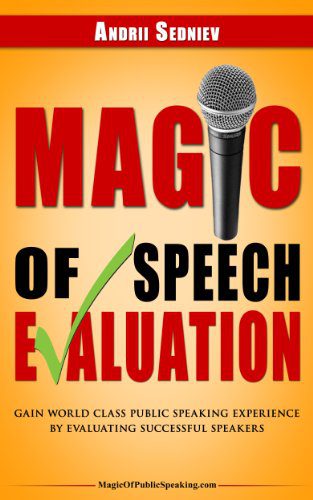Writing a speech analysis
Writing a speech analysis means analysing a speech for WHAT is said and HOW it is said.

Writing a speech analysis - What and how
WHAT – What was said is analysed according to the familiar procedure of text analysis, conversation analysis, dialogue analysis.
HOW – How something was said is an additional consideration of who says something and how it is said, because in speeches, important messages can also be sent through appearance and behaviour. And as Paul Arden put it to the point by saying: „Don’t make a speech, put on a show.“ a speech is more than words. It’s a show.
To get an idea and powerful evidence of the impact that appearance has on the message, watch this video by Cameron Russel: „Looks aren’t everything. Believe me, I’m a model„, one of the most watched TED Talks ever.
Checklist for writing a speech analysis
Who is speaking to whom?
Who is speaking?
- Boss
- Political Leader
- Parent, husband, child,
- Club president
- Expert on a specific subject
Appearance of the speaker
- What does the speaker look like?
- How is he dressed?
- What posture does he adopt?
Behaviour of the speaker
- Does the speaker use gestures?
- What is his voice like?
- How does he move?
To whom is (s)he speaking?
- Family
- Experts
- Employees, colleagues
- Club members
What is said and why
What is the occasion of the speech?
- Conference
- Political event
- Family event (birthday, wedding, funeral service, …)
- Professional event
- Association, Club
What is the topic?
- What is the speech about?
- Is the topic clear?
- Does the speech refer to something that happened earlier?
What is the intention and purpose of the speech?
- To explain something
- To update the audience on something
- To review something
- To give an opinion
- To argue something
How is the speech held?
Structure
- Introduction: how was the speech started? With an example, a quote, a question, a general statement, a personal experience, a current event, hypothesis, joke, thesis, …
- Main: how was the main part constructed? With arguments, counter-arguments, examples, personal experiences, scientific evidences like facts and figures, prom proofs, mental constructs, thoughts, prominent quotes as proof, …
- Conclusion and finish: how was the speech finished? With a request, petition, question, …
Style and tonality
- Are stylistic devices used? Metaphors, repetitions, scientific quotations, citations, …
- Was a particular language or expression used? Technical terms, scientific expressions, youth language, …
Evaluation: Does the speech have an impact?
-
- Is the speech successful?
- Does the message get across?
- Are the listeners convinced?
- Is the speech effective?
- Do the listeners react as the speaker intended?
Examples
Another example of a speech analysis: here about “Barack Obama’s New Hampshire Primary Speech”
Formulations for writing a speech analysis
Introduction
-
- „NAME OF THE SPEAKER“ introduces the topic of his speech by
- … aims to grab the audience’s attention with …
Main part
- … draws a historical parallel to
- … provides examples of / from
- … proves the necessity to / of
- … uses the evidence of …to justify
- … claims that …
- … acknowledges
- … refers to …
- … uses STYLISTIC MEANS of … to …
- … frequent use of STYLISTIC MEANS, such as EXAMPLE, gives the audience the feeling that ….
- … emphasises the importance of his words by using STYLISTIC MEANS
- … admits that ….
- … focuses his argument on the fact that …
- … emphasises the point that … ….
- … asks his audience to …
- … emphasises the point ….
- … argues that
- … cities …
- by referring to …. he tries to attract the attention of the audience
- by stating that … he tries to emphasise the importance of … to emphasise
- by pointing out
- by quoting … THE SPEAKER stresses that …
- by citing …. THE SPEAKER proofs
- by developing his argument step by step by …
Conclusion
- THE SPEAKER concludes the speech by …
- All in all, THE SPEAKER clearly states his aims and expectations …
- I would like to point out that THE SPEAKERs use of
- With his … appearance THE SPEAKERS persuaded, convinced, questioned, …
- in the final conclusion, the previous argumentation is summarised
More about writing English texts
Weiterführendes Material
- Magic of Speech Evaluation: Gain World Class Public Speaking Experience by Evaluating Successful Speakers*
*sponsored Links



